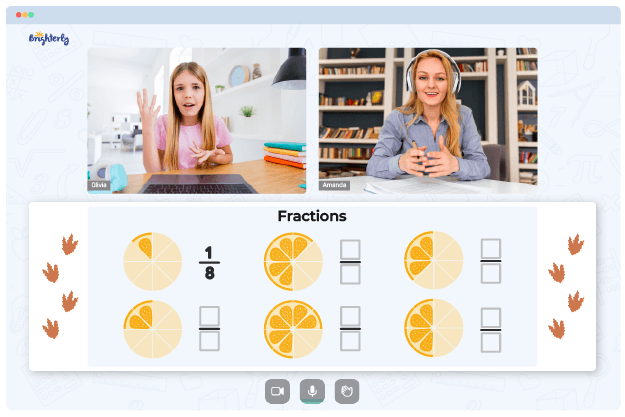Simplest Form – Definition with Examples
Updated on January 13, 2024
Are you ready to embark on a thrilling mathematical journey with Brighterly: Math Made Fun for Kids? Today, we’re diving into the captivating world of fractions and exploring the concept of simplest form. Get ready to discover the magic behind reducing fractions to their most simplified and engaging form!
At Brighterly, we believe that learning math should be an exciting adventure, filled with creativity and bursts of curiosity. That’s why we’ve crafted this article to introduce you to the concept of simplest form in a way that will make your mathematical exploration truly memorable.
What is Simplest Form?
In mathematics, simplest form refers to expressing a fraction in its most reduced or simplified form. When a fraction is in simplest form, the numerator (the number above the fraction line) and the denominator (the number below the fraction line) have no common factors other than 1. In other words, the fraction cannot be further simplified.
Examples of Simplest Form
Let’s take a look at some examples to understand simplest form better:
-
Example 1: Consider the fraction 6/12. To simplify this fraction, we need to find the greatest common factor (GCF) of the numerator and the denominator, which in this case is 6. By dividing both the numerator and denominator by 6, we get 6/12 = 1/2. Therefore, the simplest form of 6/12 is 1/2.
-
Example 2: Now, let’s take the fraction 9/27. The GCF of 9 and 27 is 9. By dividing both the numerator and denominator by 9, we obtain 9/27 = 1/3. Thus, the simplest form of 9/27 is 1/3.
-
Example 3: Consider the fraction 8/10. To simplify this fraction, we find the GCF of 8 and 10, which is 2. By dividing both the numerator and denominator by 2, we get 8/10 = 4/5. Hence, the simplest form of 8/10 is 4/5.
-
Example 4: Let’s explore another fraction, 16/20. The GCF of 16 and 20 is 4. Dividing both the numerator and denominator by 4 gives us 16/20 = 4/5. Therefore, the simplest form of 16/20 is 4/5.
-
Example 5: Now, let’s work with a slightly larger fraction, 35/56. The GCF of 35 and 56 is 7. Dividing both the numerator and denominator by 7 yields 35/56 = 5/8. Hence, the simplest form of 35/56 is 5/8.
As you can see from these examples, the fractions are transformed into simpler forms by dividing both the numerator and the denominator by their GCF.
Why Use Simplest Form?
Using simplest form is important because it allows us to easily compare and operate on fractions. When fractions are in their simplest form, they are easier to add, subtract, multiply, or divide. It helps us grasp the true value of the fraction and simplifies further calculations.
By simplifying fractions to their simplest form, we eliminate unnecessary complexity and make mathematical operations more manageable. It’s a fundamental skill that helps us navigate the world of fractions with confidence.
Examples of Simplest Form
Let’s take a look at some examples to understand simplest form better:
-
Example 1: Consider the fraction 6/12. To simplify this fraction, we need to find the greatest common factor (GCF) of the numerator and the denominator, which in this case is 6. By dividing both the numerator and denominator by 6, we get 6/12 = 1/2. Therefore, the simplest form of 6/12 is 1/2.
-
Example 2: Now, let’s take the fraction 9/27. The GCF of 9 and 27 is 9. By dividing both the numerator and denominator by 9, we obtain 9/27 = 1/3. Thus, the simplest form of 9/27 is 1/3.
-
Example 3: Consider the fraction 8/10. To simplify this fraction, we find the GCF of 8 and 10, which is 2. By dividing both the numerator and denominator by 2, we get 8/10 = 4/5. Hence, the simplest form of 8/10 is 4/5.
-
Example 4: Let’s explore another fraction, 16/20. The GCF of 16 and 20 is 4. Dividing both the numerator and denominator by 4 gives us 16/20 = 4/5. Therefore, the simplest form of 16/20 is 4/5.
-
Example 5: Now, let’s work with a slightly larger fraction, 35/56. The GCF of 35 and 56 is 7. Dividing both the numerator and denominator by 7 yields 35/56 = 5/8. Hence, the simplest form of 35/56 is 5/8.
As you can see from these examples, the fractions are transformed into simpler forms by dividing both the numerator and the denominator by their GCF.
Conclusion
Understanding simplest form is a crucial skill in mathematics. It allows us to express fractions in their most reduced or simplified form, making them easier to work with in various operations. By dividing both the numerator and denominator by their greatest common factor, we eliminate any unnecessary complexity and uncover the true value of the fraction.
At Brighterly: Math Made Fun for Kids, we believe that math should be an enjoyable journey of discovery. By grasping the concept of simplest form, young minds can gain confidence in handling fractions and unlock the door to a deeper understanding of mathematical concepts.
Frequently Asked Questions about Simplest Form
What is simplest form in mathematics?
Simplest form refers to expressing a fraction in its most reduced or simplified form. In simplest form, the numerator and denominator have no common factors other than 1, making the fraction impossible to further simplify.
How do you simplify a fraction to its simplest form?
To simplify a fraction, you need to find the greatest common factor (GCF) of the numerator and the denominator. Then, divide both the numerator and denominator by the GCF to reduce the fraction to its simplest form.
Why is it important to express fractions in simplest form?
Using simplest form allows for easier comparison and operation of fractions. It helps us understand the true value of a fraction and simplifies calculations such as addition, subtraction, multiplication, and division involving fractions.
Can all fractions be simplified to simplest form?
No, not all fractions can be simplified further. Fractions that are already in simplest form have no common factors between the numerator and the denominator other than 1. These fractions cannot be reduced any further.
What happens if a fraction is not in simplest form?
If a fraction is not in simplest form, it means that the numerator and denominator have common factors other than 1. To express it in simplest form, you need to find the GCF and divide both the numerator and denominator by it.
Are there any shortcuts or rules to simplify fractions quickly?
Yes, there are a few shortcuts you can use to simplify fractions. One approach is to divide both the numerator and denominator by their highest common factor until no more common factors remain. Another approach is to divide both the numerator and denominator by the same number until they can no longer be divided.
Sources
To ensure the accuracy of the information provided in this article, we referred to reputable sources, including:




